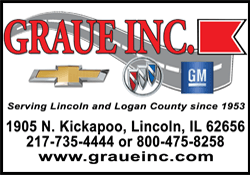US construction on solid ground; manufacturing under pressure
 Send a link to a friend
Send a link to a friend
 [January 03, 2024] By
Lucia Mutikani [January 03, 2024] By
Lucia Mutikani
WASHINGTON (Reuters) -U.S. construction spending rose less than expected
in November amid a decline in outlays on public projects, but data for
the prior month was revised sharply higher suggesting underlying
strength in the sector.
Despite coming below expectations, the report from the Commerce
Department on Tuesday added to a recent raft of data on the labor
market, consumer spending and confidence in suggesting that the economy
regained its poise after appearing to stumble at the start of the fourth
quarter.
Construction activity is being underpinned by the new single-family
housing segment, thanks to an acute shortage of previously owned homes
on the market. A policy by President Joe Biden's administration to bring
semiconductor manufacturing back to the United States is also boosting
the construction of factories, helping the keep the economy afloat.
"Construction activity is one reason the Federal Reserve rate hikes have
not brought the economy to its knees like the economic models from other
business cycles had forecasted," said Christopher Rupkey, chief
economist at FWDBONDS in New York.
"There's money for new industrial building projects with the only risk
being there is a severe nationwide shortage of construction workers."

Construction spending increased 0.4%. Data for October was revised up to
show construction spending surging 1.2% instead of gaining 0.6% as
previously reported. Economists polled by Reuters had forecast
construction spending rising 0.6%.
Construction spending shot up 11.3% on a year-on-year basis in November.
Spending on private construction projects increased 0.7% in November
after rising 1.2% in October.
Investment in residential construction advanced 1.1% after rising 2.0%
in the prior month. Outlays on new single-family construction projects
jumped 2.9%. With the rate on the popular 30-year fixed mortgage falling
further below 7%, single-family homebuilding could surge in 2024.
Strong activity in this housing market segment helped to end nine
straight quarters of decline in residential investment in the third
quarter. Economists expect housing to have contributed to gross domestic
product in the fourth quarter.
The Atlanta Federal Reserve is currently estimating GDP growth rising at
a 2.3% annualized rate in the last quarter of 2023. The economy grew at
a 4.9% pace in the third quarter.
ECONOMY EXPANDING
The government is scheduled to publish its advance estimate of
fourth-quarter GDP later this month. The economy has continued to expand
despite 525 basis points worth of interest rate hikes from the Federal
Reserve since March 2022.
The U.S. central bank last month held its policy rate steady at the
current 5.25-5.50% range and policymakers signaled in new economic
projections that the historic monetary policy tightening engineered over
the last two years is at an end and lower borrowing costs are coming in
2024.
[to top of second column] |

New contemporary attached residential homes are shown under
construction by Beazer Homes USA Inc. in Vista, California, U.S.,
October 24, 2023. REUTERS/Mike Blake/File Photo

Stocks on Wall Street were mostly lower. The dollar rose against a
basket of currencies. U.S. Treasury prices fell.
"Investors should expect homebuilders to grow their business this
year as the residential real estate market benefits from lower rates
in the upcoming months," said Jeffrey Roach, chief economist at LPL
Financial in Charlotte, North Carolina. "Given the construction
activity, we expect residential investment contributed to economic
growth in the fourth quarter."
Outlays on multi-family housing projects edged up 0.1% in November.
Momentum is fading amid a large stock of multi-family housing under
construction. The rental vacancy rate also jumped to its highest
level in 2-1/2 years in the third quarter.
Outlays on private non-residential structures like factories rose
0.2% in November. Spending on manufacturing construction projects
increased 0.5% after accelerating 2.7% in October.
Bernard Yaros, lead U.S. economist at Oxford Economics, said while
this segment of private fixed investment was cooling, he did not
"anticipate an outright contraction in 2024, as federal tax credits
aimed at expanding the nation's domestic productive capacity in
semiconductor manufacturing and green energy production are set to
ramp up."
Spending on public construction projects fell 0.7% after increasing
1.3% in October. State and local government spending declined 0.5%
while outlays on federal government projects tumbled 3.1%.
While construction spending is holding its own despite the higher
borrowing costs, manufacturing continues to struggle.
S&P Global said on Tuesday that its manufacturing PMI fell to a
reading of 47.9 in December amid a steep decline in new orders. That
was revised down from the preliminary reading of 48.2 and lower than
49.4 in November.
A reading below 50 indicates contraction in manufacturing, which
accounts for 10.3% of the economy.
The decline in factory activity was mirrored across the globe, with
manufacturing in the euro area contracting for an 18th straight
month and Asia's manufacturing powerhouses taking a hit due to
China's patchy economic recovery.
(Reporting by Lucia Mutikani; Editing by Andrea Ricci)
[© 2023 Thomson Reuters. All rights
reserved.]
This material may not be published,
broadcast, rewritten or redistributed.
Thompson Reuters is solely responsible for this content.
 |